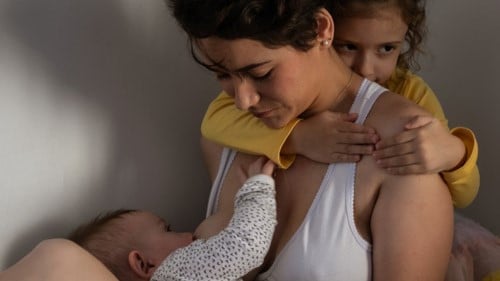At a glance
It is important to address infant and young child feeding in emergencies (IYCF-E). This process includes promoting and prioritizing safe and appropriate feeding for infants and young children (birth to 2 years) during a natural disaster or other emergency. The goal is to protect and maximize the nutrition, health, and development of the child.

Purpose
CDC’s Infant and Young Child Feeding in Emergencies (IYCF-E) Toolkit is designed to help emergency response personnel better plan for and address the nutrition and feeding needs of young children (birth to 2 years) and their families. These needs can occur before, during, or after a disaster.
IYCF-E is relevant anywhere in the world where natural disasters and public health emergencies occur. However, this toolkit focuses on IYCF-E preparedness and response efforts specific to the United States and its territories.
The toolkit includes printable materials and resources that can be used with or given to families.
Intended audience
The primary audiences for this toolkit are
- Emergency preparedness and response personnel, such as first responders, relief workers, community health workers, and volunteers.
- U.S. state and territory organizations who respond to domestic natural disasters and public health emergencies.
Additional audiences may include
- Health care providers
- Community partners
- The public
- Families
- Individuals
Populations to consider
Access and functional needs of pregnant, postpartum, and breastfeeding women may be heightened during and after a natural disaster or public health emergency. This is also true for infants and young children, especially those with special health care needs.
Pregnant women and new mothers
Pregnant women, particularly those who may give birth during an emergency, need emergency preparation guidance to safely deliver and feed their newborns. During an emergency, breastfeeding support after delivery is critical.
Infants and children with special health care needs
All infants and children have unique needs in emergencies. Caring for infants and children with special health care needs is often more complex because of their health conditions and extra care requirements. These may include:
- Difficulty moving from one place to another.
- Urgent or constant medical needs.
- Difficulty communicating.
- Trouble with transitioning to different situations.
- Specific equipment that must be kept clean.
A disaster can present all these difficulties at once.
Importance of IYCF-E
Adequate nutrition is especially important in an emergency. Infants and young children are particularly vulnerable during emergencies, when circumstances can lead to illness, infection, and potentially death.
Breastfeeding is the safest way to feed infants and young children in emergency situations to prevent illness. However, natural disasters and public health emergencies can create unique challenges for breastfeeding mothers and feeding challenges for any family. Safe feeding and preparation of breast milk, complementary foods, and infant formula, along with appropriate cleaning and storing of infant feeding items, are also important to:
- Minimize the risk of potential illness associated with feeding.
- Maximize a child's health and development.
Challenges in IYCF-E
Natural disasters and public health emergencies present many situations that can create unique feeding challenges for families.
Displacement
Families experiencing an emergency may have to leave their homes and travel to a different city or state or to a shelter. In rare circumstances, family members could be separated, which can cause feeding challenges, especially for a breastfed baby.
Lack of family-friendly spaces
When families are relocated, such as to a shelter, they may not have privacy to breastfeed or express breast milk or have access to lactation support. Without privacy and support, parents may be less likely to breastfeed or express their milk. Families also require space to adequately clean and store infant feeding supplies, safely prepare infant food, and hygienically change diapers.
Inadequate food or water
Infants, children, pregnant women, and new mothers are vulnerable to undernutrition, especially during emergencies. Infants and young children can become undernourished faster than adults. Undernourished children, compared to children of healthy weight, are more likely to become ill. They also have a harder time recovering due to impaired immune systems.
Families experiencing an emergency that affects their access to electrical power and other resources or the safety of their water or environment may find it more difficult to get, prepare, and store food.
Displaced families may also be unsure if food and safe drinkable water will be available at their destination, how long they will be away, and how long the emergency will last. This uncertainty makes it hard to pack and plan for an emergency.
Potential risks with infant formula
Breastfeeding is the safest way to feed a baby during a natural disaster. Families using infant formula before an emergency will need support and guidance to help them feed their babies safely during an emergency.
The potential risks and challenges associated with feeding infant formula during an emergency include:
- Access to infant formula.
- Access to safe water for mixing infant formula and cleaning infant feeding supplies.
- Safe storage and handling of infant formula.
- Access to space and supplies to properly clean and store infant feeding items.
Worsening of disparities
Families with limited access to safe housing, healthy food, and health care before an emergency may be the most affected in an emergency or disaster. It may be especially hard for these families to continue breastfeeding and safely feed their children. It is important to consider the unique needs of these families when planning for and addressing disasters.
